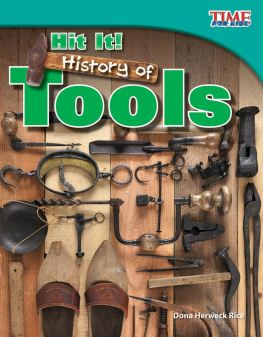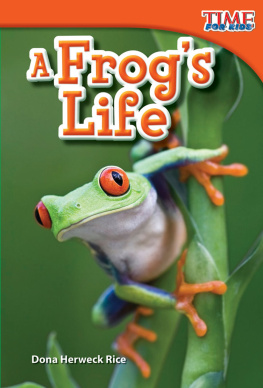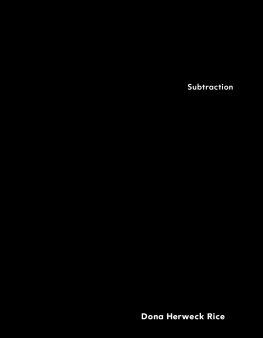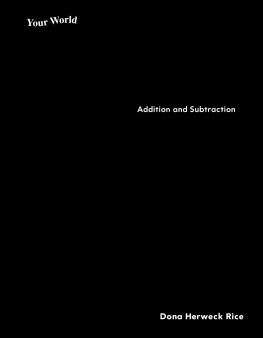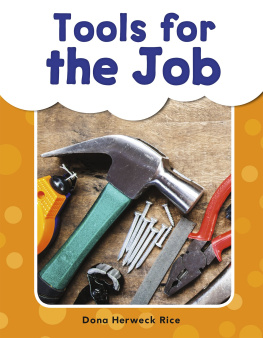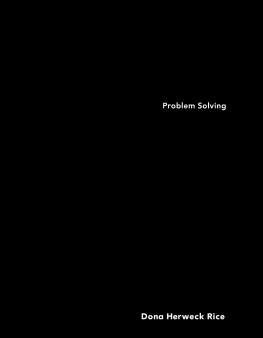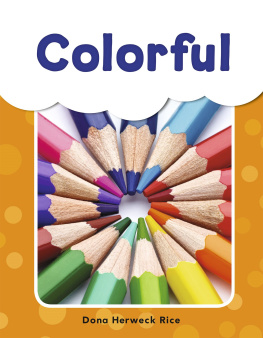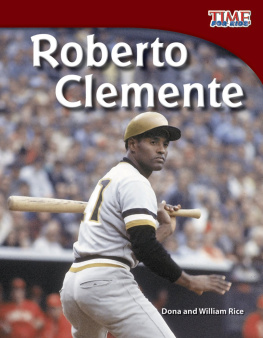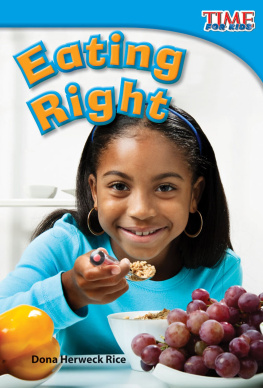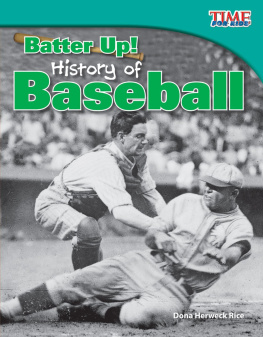
Dona Herweck Rice
Hit It! History of Tools Rice
T ools T ools
Hit It! Hit It!


Consultant
Timothy Rasinski, Ph.D.
Kent State University
Publishing Credits
Dona Herweck Rice, Editor-in-Chief
Robin Erickson, Production Director
Lee Aucoin, Creative Director
Conni Medina, M.A.Ed., Editorial Director
Jamey Acosta, Editor
Heidi Kellenberger, Editor
Lexa Hoang, Designer
Lesley Palmer , Designer
Stephanie Reid, Photo Editor
Rachelle Cracchiolo, M.S.Ed., Publisher
Image Credits
Cover thieury/Shutterstock; p.3 MilousSK/Shutterstock; p.4 Photo Library; p.4 inset: Pan Xunbin/
Shutterstock; p.5 Monkey Business Images/Shutterstock; p.5 inset: Litvinenko Anastasia/Shutterstock; p.6
Tim Bradley; p.6 inset: Dan Breckwoldt/Shutterstock; p.7 top to bottom: Tischenko Irina/Shutterstock; Lilia
Barladyan/Shutterstock; p.8-9: The Bridgeman Art Library; p.8 inset: Adrian Britton/Shutterstock; p.9 top to
bottom: JackK/Shutterstock; hans.slegers/Shutterstock; Vasaleks/Shutterstock; p.10 top to bottom: hsvrs/
iStockphoto; Anutik/iStockphoto; AVAVA/Shutterstock; p.11 Aurora Creative/Getty Images; p.12 left to right:
Taiga/Shutterstock; Kenneth V. Pilon/Shutterstock; p.13 Ben Cranke/Getty Images; p.14 top to bottom:
Vereshchagin Dmitry/Shutterstock; LOC [LC-USZ62-107200]; badahos/Shutterstock; p.15 Stephen VanHorn/
Shutterstock; p.15 inset: irakite/Shutterstock; p.16 top to bottom: The Bridgeman Art Library; p.16 inset:
SVLuma/Shutterstock; p.17 Johann Helgason/Shutterstock; p.18 top to bottom: LOC [LC-DIG-fsa-8e11172];
LOC [LC-DIG-nclc-05011]; p.19 left to right: fusebulb/Shutterstock; Yuri Arcurs/Shutterstock; p.20 Alenavlad/
Shutterstock; p.21 top to bottom: Karel Gallas/Shutterstock; Kalim/Shutterstock; p.22 left top to bottom:
SSPL/Getty Images; De Agostini/Getty Images; SSPL/Getty Images; p.23 left top to bottom: The Bridgeman
Art Library; Baloncici/Shutterstock; George Dolgikh/Shutterstock; p.24 Nativestock/Getty Images; p.24
inset: Seregam/Shutterstock; p.25 top to bottom: The Bridgeman Art Library; DeAgostini/Getty Images;
Galushko Sergey/Shutterstock; p.26 top to bottom: DeAgostini/Getty Images; Irina Rogova/Shutterstock;
270770/iStockphoto; p.27 Raia/Shutterstock; p.27 inset: Madlen/Shutterstock; p.28 top left to right: jrg
rse-oberreich/Shutterstock; Allison Achauer/Shutterstock; bottom left to right: winnond/Shutterstock;
nito/Shutterstock; p.29 top left to right: Stocksnapper/Shutterstock; ituchka/Shutterstock; Joe Belanger/
Shutterstock; bottom left to right: MilousSK/Shutterstock; Rob Stark/Shutterstock p.32 Tischenko Irina/
Shutterstock; back cover: George Dolgikh/Shutterstock
Based on writing from TIME For Kids.
TIME For Kids and the TIME For Kids logo are registered trademarks of TIME Inc.
Used under license.
Teacher Created Materials
5301 Oceanus Drive
Huntington Beach, CA 92649-1030
http://www.tcmpub.com
ISBN 978-1-4333-3680-5
2012 Teacher Created Materials, Inc.
Reprinted 2013
Synched Read-Along Version by:
Triangle Interactive LLC
PO Box 573
Prior Lake, MN 55372
ISBN-13: 978-1-68444-861-6 (e-book)

Table of Contents
Dig In! ............................................
The Nuts and Bolts .................................
Nailing It .........................................
Tools of the Trade .................................
The Finishing Touch ................................
Glossary ..........................................
Index ............................................
About the Author .................................

Dig In!
She picks up the sticks. She looks at them closely and thinks about
what to do. She points the sticks down and works to grab her food. It is
hard to do, but she keeps trying. Then, finally, success! She puts the food
to her mouth and eats.
But the sticks are not chopsticks, and she is not human. She is a
chimpanzee. She uses the sticks to scoop up termites for her dinner.
The tools make her life a little easier.
Throughout time, people have made tools to do many different
things, including to eat. But it is amazing to think that other animals
use tools, too!
A chimpanzee eats termites
using a long stick.

Chopsticks ()
Chopsticks are used like tongs to pick up
food or to push it into a persons mouth
straight from a bowl. They were first used in
China around 5,000 years ago . Along with
knives, they are among the earliest man-made
eating utensils we know.

The Nuts and Bolts
What is the point of making and using tools? Tools get the job done,
whatever it is.
The brain is amazing. There is not much the brain can imagine that
it cannot figure out how to make happen no matter how impossible
it seems at first. For example, long ago in ancient Egypt, people built
enormous pyramids that still stand. How did they do it? After all, they
did not have the modern cranes , bulldozers, and other powerful equipment
we have now. But they used their brains to figure out the right tools,
materials , and equipment. We see the results of their work today rising
from the desert sand.
Ancient Egyptians used
tools to create the towering
pyramids we see today .

Tool or Equipment?
Whats the difference? Equipment is something
used for a specific purpose. For example, a
helmet is a piece of equipment used to protect
the head. Tools are things that are made or
used to do work. A hammer is a tool that is
made to pound nails.

